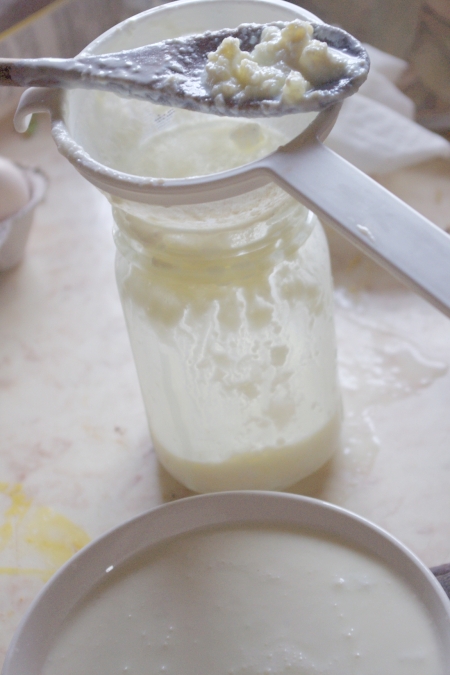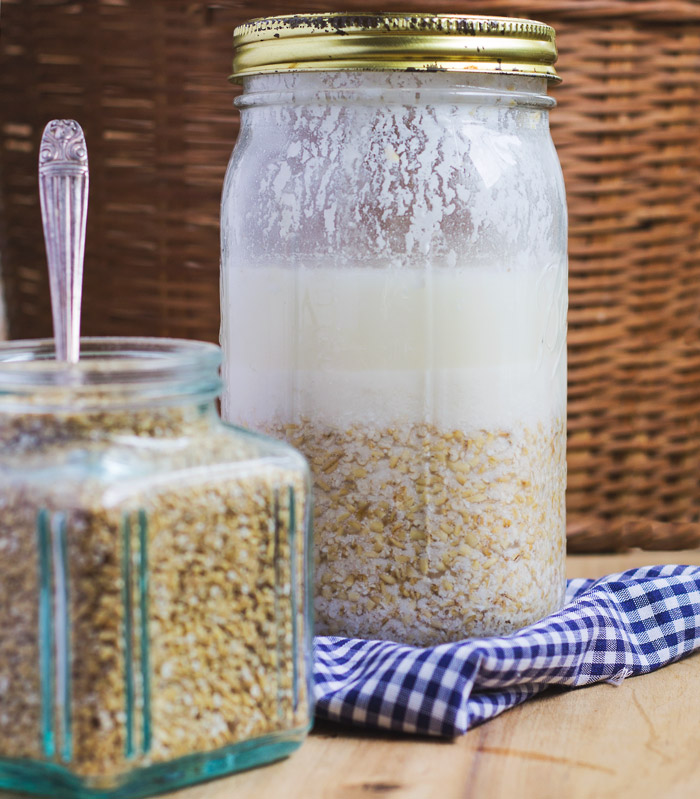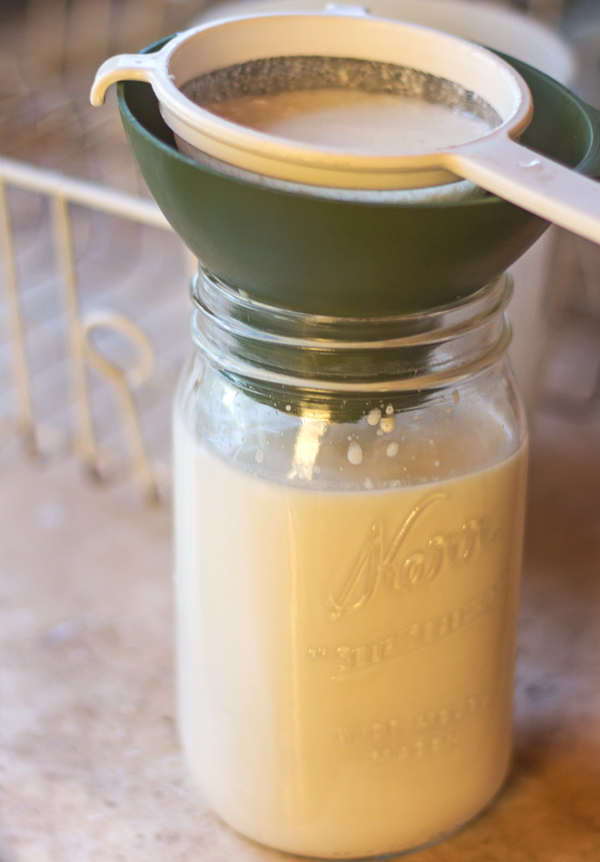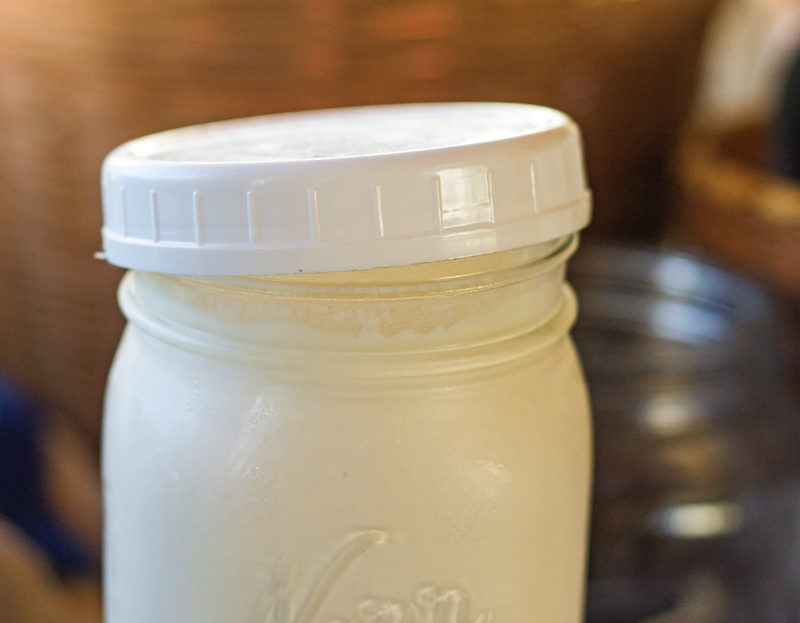Should Milk Kefir Be Cultured With an Airtight Lid or a Permeable Lid?

It is generally said that milk kefir is an aerobic culture. This means that, much like kombucha and sourdough, it requires oxygen for the yeast aspect of the culture to thrive. This is also why stirring a sourdough starter tends to help with the formation of a larger quantity of yeasts in proportion to bacteria. This yeast activity is also why one can use milk kefir as a bread-leavening agent much like a sourdough starter.
I have for years cultured milk kefir with what you would call a permeable lid. These are the types of lid that keep fruit flies and such out but allow oxygen to circulate into the fermentation medium. I often use a clean cloth or a coffee filter fastened to a quart jar using a canning ring. This is also how I keep my sourdough starter – in a quart jar covered with a permeable lid.
But sometime in the past year I came upon some questions regarding whether milk kefir should be cultured as an aerobic or anaerobic ferment. In Traditionally Fermented Foods I give instructions for using a permeable lid in making milk kefir. I also give instructions for a second fermentation for milk kefir using a non-permeable lid. This second fermentation tends to mellow the flavor of milk kefir and can also be used to imbue a flavor such as citrus or spices into the milk kefir.

So I decided, upon starting up a new batch of milk kefir last fall, that I would just try culturing it differently. I have since used an airtight lid or a semi-airtight lid (think those plastic jar lids that aren’t totally water tight) for every single kefir culturing.
Resources & Equipment (note: some of these are affiliate links):
What’s the Difference Between Kefir & Yogurt?
Dehydrated Milk Kefir Grains to get you started.
Fresh (live) Milk Kefir Grains.
White Plastic Lids for Mason Jars.
How to Make Milk Kefir
Favorite Milk Kefir Cultures & Equipment
Traditionally Fermented Foods: Recipes and much more about milk kefir and many other ferments

I have since noticed a couple of things.
For one, my milk kefir grains seem a bit more resilient when I abandon them. Every once in a while life puts these cultures on the back burner and I have lost many a sourdough starter or kefir grain to this very situation. Generally this starts out with my milk kefir sitting for a week or two and forming what appears to a be a kahm yeast layer on top. Since this isn’t really that abnormal or alarming, I proceed to fish the kefir grains out, toss that fuzzy kefir, and revitalize my kefir grains with frequent, small feedings such as using a pint of milk rather than a quart and straining them off twice as frequently. But often the fuzzy kefir has come back again and again and the kefir tastes just a bit off. This has always lead me to believe that the kefir culture may still maintain its original colony of bacteria and yeasts, but it has been joined by another foreign microorganism that isn’t so desirable and those kefir grains sometimes never recover from this imbalance.
Since culturing in an anaerobic (or mostly anaerobic) state, I have not had this happen despite a couple of neglectful weeks here and there. In fact, upon opening the jar, there is no kahm yeast, fuzzy anything, or that off smell or flavor generally produced by milk kefir when it has been neglected. And I go back to using them with zero problems.
Another difference is the flavor. I suspect that taking out most if not all of the culture’s access to oxygen has tipped the balance to a more bacteria-heavy colony of microorganisms. The lower yeast count then gives it less of that yeasty carbonated flavor and a more acidic flavor. There is no mistaking it, though, it is definitely still kefir.

So will I continue to culture milk kefir in a mostly airtight environment? I think so. This is mostly because of the first reason I gave – I am just prone to neglect cultures from time to time and this feels like a bit of insurance against killing them entirely. I do think, however, that for the purpose of leavening bread it would be a good idea to give some oxygen to the milk kefir you are culturing just for that purpose.
But that’s just me. If you’ve read Traditionally Fermented Foods you know that I tend to eschew the idea that there are hard and fast rules to fermentation or cultured foods in general. Instead, I find it best to try to understand some of the basic principles behind fermentation so that you can then apply it to your specific needs and make it work – the dairy, vegetables, bread, and more – for you.
What’s your take on culturing kefir with or without oxygen?

I’ve always done it permeable. And it is one of the ferments (unlike kombucha!) that we don’t really forget to deal with regularly so it has been going strong for about 6 years with the same grains. I’ll have to give it a try and see how the taste changes. We like the current flavor though, so I think I’m likely to keep doing the permeable way. But good to know there are options.
Have always kept a tight lid on jars of fermenting milk kefir and grains are still reproducing abundantly from originals obtained 6 years ago. Guess I’ve always followed the closed-lid instructions I learned when new to making kefir without even considering the aerobic method. Taste is tangy & we love it!
Having trouble getting our water kefir grains to multiply, though, so if you have any suggestions, they’d be most welcome! (Aerobic or anaerobic? I have tried both!)
I use airtight method as this was how it was originally explained to me. I’ve been culturing for about 1 year now and everything seems to be fine. I do two batches at once of about 1 pint of low fat milk each and don’t leave much room in the jars. Normally culture them for around 48 hours. Do you see any issues with the way I culture? Taste is definitely sour and tangy but I definitely like it (however, have never tried any other kefir so cannot compare with anything). Also, should I be concerned with the amount of whey a culture can produce? This is the clear liquid stuff, right? I guess the longer you let it culture the more whey it produces? Any concerns with consuming too much whey with my kefir? I really appreciate the advice and support! Love the stuff! And just want to ensure I’m doing things the most ideal/correct/safe fashion as possible.
I have been culturing 1st and 2nd ferments of milk and water kefir anaerobically for 5 months and it is working beautifully. By removing tue whey when seperated, I have made sour cream with garlic and herbs and for sweet, a yoghurty dessert with cocao, coconut sugar, chia seeds and finely grated lindt choc… so yum.